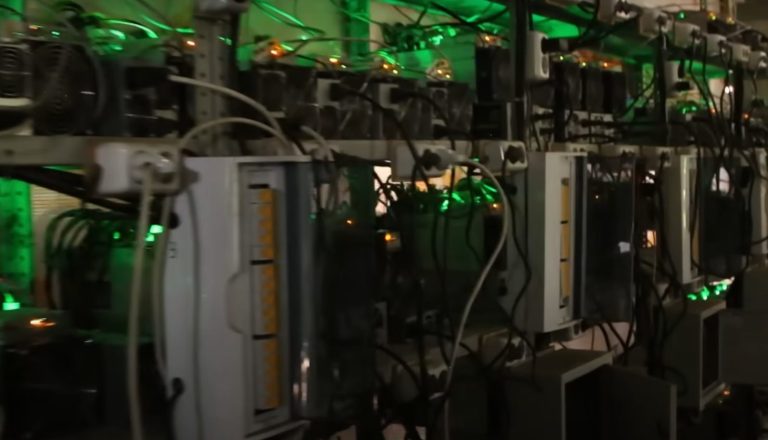This article is an on-site version of our Energy Source newsletter. Sign up here to get the newsletter sent straight to your inbox every Tuesday and Thursday
Hello and welcome back to Energy Source.
Energy will be near the top of the agenda as leaders from the world’s top economies gather in Japan this week for the G7 summit.
My colleagues reported over the weekend that European leaders want to ban Russian gas imports on routes where Moscow has cut supplies, which would escalate the energy war. If enacted, the move would put a significant barrier up for any potential energy rapprochement down the road. Japan’s climate strategy, which leans heavily on hydrogen and ammonia, will also be under scrutiny.
In today’s newsletter, I look at a big pipeline deal between Oneok and Magellan Midstream, and what it says about the profound shift under way in the American energy landscape. Amanda looks at US rules aimed at bringing solar and other clean energy supply chains back to the US. They’re raising more questions than answers.
Thanks for reading — Justin
Oneok’s mega-deal to buy rival pipeline builder Magellan Midstream for $19bn went down like a lead balloon with the company’s investors.
Oneok’s shares closed down 9 per cent yesterday, following the purchase announcement on Sunday.
The deal would create a new pipeline behemoth worth about $60bn. But investors are questioning the commercial logic from Oneok in stepping out of its core natural gas transportation business to buy Magellan’s crude and refined fuels pipelines. It will be difficult to wring efficiencies out of the disparate businesses, analysts said.
Executives at the companies, both of which are based in the tight knit oil and gas community in Tulsa, Oklahoma, will have a hard sell in the coming weeks. But the deal also speaks to broader shifts under way in the US energy landscape.
The shale boom era caused a surge in US oil and gas production that transformed the country into an energy superpower; hundreds of billions of dollars were spent drilling new wells during this period.
For pipeline builders — the so-called midstream part of the industry — the peak shale era brought its own wealth of opportunities. As gushers of oil and natural gas suddenly erupted in places such as North Dakota and Pennsylvania, the US needed a vast expansion of the plumbing that moves fuel around the country. Cue a decade-plus long boom that led to thousands of miles of new pipelines.
The growth story is not over in the US oil and gas patch — but the associated pipeline building bonanza has largely run its course and an increasingly inhospitable regulatory environment has waylaid a number of big projects. That makes acquisitions one of few remaining paths to growth.
Or as Raoul LeBlanc, a vice-president at S&P Global Commodities Insights, told Myles:
“Everyone built out the pipeline infrastructure for the shale revolution. Now that shale is in harvest mode and it is nearly impossible to build new pipelines, it is not surprising to see big mergers taking place — period. Expect more.”
Now, pipeline companies are starting to think about how their fossil-fuel dependent businesses will fair in the energy transition.
That has some companies starting to look for new growth in moving around low-carbon fuels such as hydrogen and biofuels or transporting carbon dioxide from carbon capture and storage projects — although none of those businesses really exist at any scale today.
Pierce Norton, Oneok’s boss, told analysts on Monday that the new company’s bigger size would make it better prepared for the big changes coming down the pipe.
“Scale does matter going into the future, especially going into wherever energy is going,” Norton said on a call with analysts.
“As far as hydrogen and . . . renewable fuels, those kind of things that can move through these [pipelines]. The future is going to determine that. It’s going to be determined by what the customers are desiring and the cost. But having these two companies combine sets us up for that opportunity,” he said.
The scale of the transaction — and the fraught energy politics of the moment — mean the deal will draw a sceptical look from the administration of Joe Biden.
The president took aim at the oil and gas industry as high fuel prices drove up inflation last year — and has told regulators to be on the lookout for price gouging or other evidence of collusion leading to higher prices. It has also said it wants to curb corporate power more broadly.
This will be the biggest deal in the oil and gas industry to come before the administration and will no doubt come under the microscope.
The Federal Trade Commission, which has taken a more adversarial position under its leader Lina Khan, has been scrutinising shale gas producer EQT’s $5.2bn deal to buy private producer Tug Hill for months on anti-competition grounds.
Analysts at UBS say the deal faces “limited risk” from regulators. But it will be closely watched across an industry primed for a wave of big deals. (Justin Jacobs)
The Biden administration sent the solar industry into disarray on Friday when it released confusing tax credit rules for developers that use US-made materials.
The landmark Inflation Reduction Act included a 30 per cent investment tax credit for clean energy developers, with an additional 10 per cent bonus if they use domestic products. But to qualify for the bonus, at least 40 per cent of the project costs must come from US-made components. This proportion increases to 55 per cent after 2026.
The tax credit reflects the administration’s twin goals of decarbonising quickly while simultaneously reducing reliance on Chinese supply.
Up until Friday, developers weren’t sure how the Treasury would define a US-made product. While the new guidance won’t have much of an impact on the pace of solar deployment, it will influence how the US supply chain for solar takes shape.
“When you look at all these companies that have made announcements to open factories in the US, this [guidance] is going to slow them down,” said Jim Wood, chief executive of SEG Solar, a module manufacturer in Houston. Wood expects his company’s modules to qualify for the bonus credit.
Here are three takeaways for the solar industry:
The new rules do not explicitly say solar cells have to be made in the US, but it will be hard to qualify for the full tax credit if they are made elsewhere given cells make up the bulk of production costs.
Because the US solar supply chain is in its infancy, hardly any developers will qualify for the full tax credit. The US has virtually no cell production and only produced enough modules to meet half of demand in 2022, according to Wood Mackenzie.
The Biden administration’s guidance pleased few folks. While developers were frustrated they were locked out of the full tax credit, a handful of politicians and industry groups were angry the government didn’t take a tougher stance.
The Solar Energy Manufacturers for America Coalition called the guidance a “missed opportunity” to spur production in upstream components like polysilicon and wafers. West Virginia senator Joe Manchin said the guidance “rewards” the continuation of Chinese dominance.
It’s hard to say a ruling isn’t strict enough if it would immediately render most modules ineligible for the full tax credit. If the US truly wanted to make a political statement with its subsidy, it could require all components to be domestically sourced, but that would make it even more difficult for developers to use US products in the tax credit’s 10-year timeframe. Plus, upstream manufacturers have their own IRA subsidies to monetise.
Friday’s guidance might be so stringent that it disincentivises domestic product consumption. Calculating product costs will require developers to request more information from their manufacturers, many of whom don’t have this information.
“The domestic manufacturers who wanted to force more of the materials to be made in the US got their way, but it’s not administrable,” said Keith Martin, partner at Norton Rose Fulbright, who predicts that the manufacturers who can offer cost clarity will charge products at a premium.
By contrast, south-east Asian modules are cheaper and readily available. Wood Mackenzie estimates a US-made module with a US-made cell will be 42 per cent more expensive than a module from south-east Asia delivered in 2025.
“Why go through all the hassle of trying to secure capacity that doesn’t even exist right now?” asked Sylvia Leyva Martinez, senior analyst at Wood Mackenzie. “From a purely economic perspective, it makes more sense to continue importing the module.” (Amanda Chu)
How Iran will profit from Shell’s Iraqi gas project.
Trees vs concrete: Madrid mayor accused of bucking green city trend.
Carmakers’ latest Brexit angst highlights risk of UK falling behind EV battery race.
Energy Source is written and edited by Derek Brower, Myles McCormick, Justin Jacobs, Amanda Chu and Emily Goldberg. Reach us at energy.source@ft.com and follow us on Twitter at @FTEnergy. Catch up on past editions of the newsletter here.
Moral Money — Our unmissable newsletter on socially responsible business, sustainable finance and more. Sign up here
The Climate Graphic: Explained — Understanding the most important climate data of the week. Sign up here














